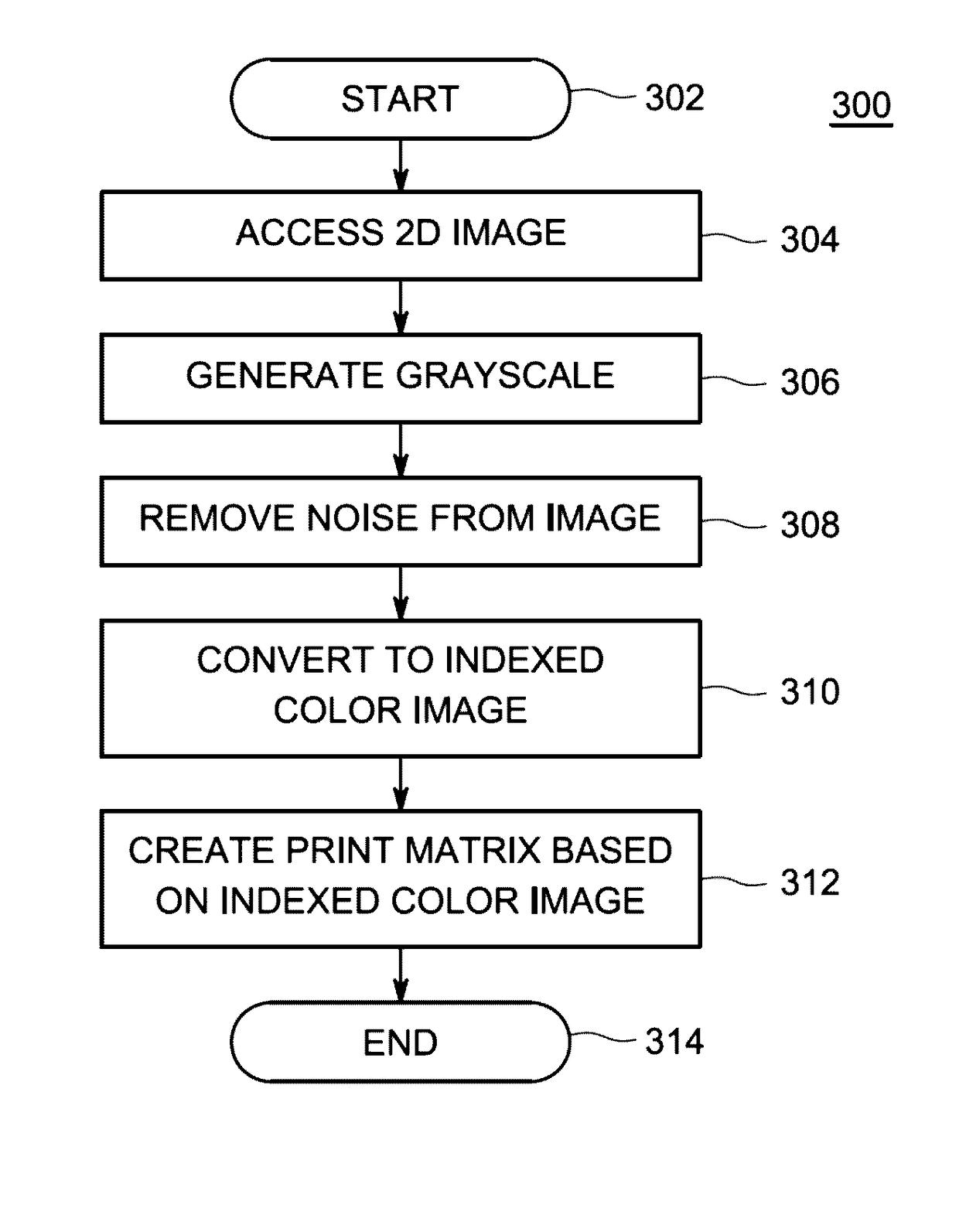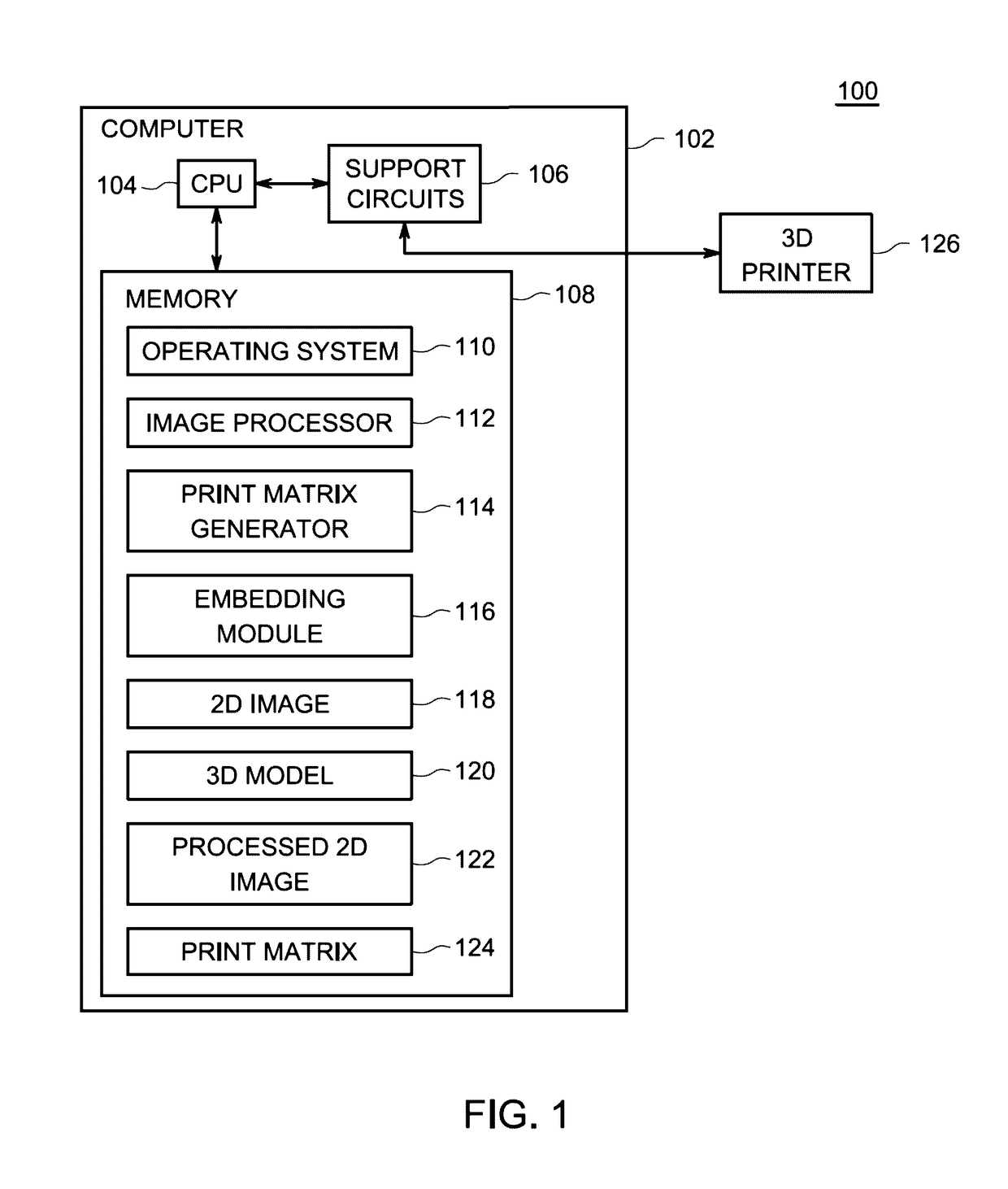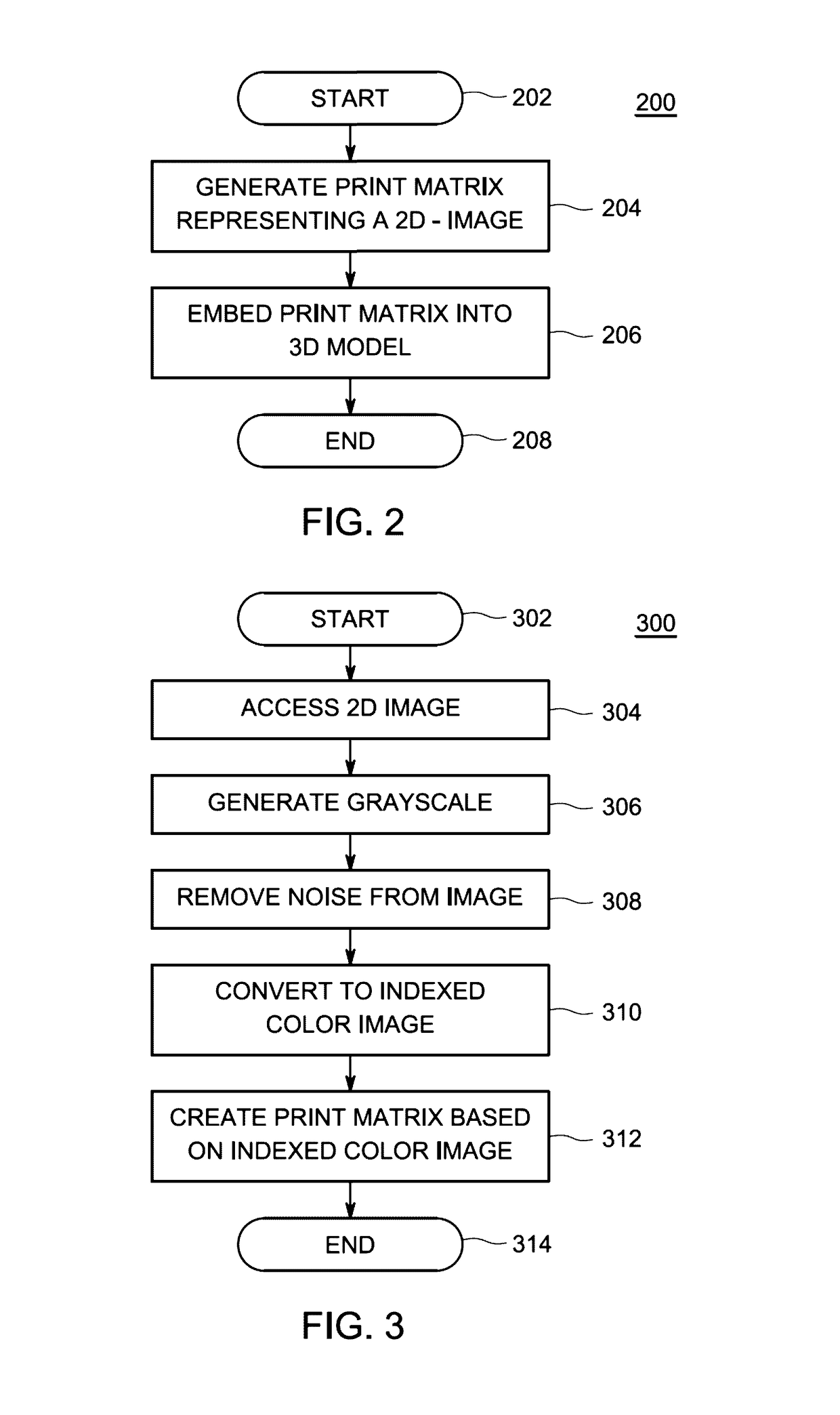Method and apparatus for embedding a 2-dimensional image in a 3-dimensional model
a 3-dimensional model and image technology, applied in the field of 3d printing, can solve the problems of undesirable results for users and inability to allow smooth shading of 2d images
- Summary
- Abstract
- Description
- Claims
- Application Information
AI Technical Summary
Problems solved by technology
Method used
Image
Examples
Embodiment Construction
[0015]As previously explained existing solutions provide undesirable results, such as a lack of smooth shading of a 2D image on a 3D model or create the 2D image by processing the image after the 3D printing is complete.
[0016]Thus, in accordance with an embodiment of the present invention, techniques are disclosed for embedding a 2D image in a 3D model. A 2D image may be any digital image from any source, for example, a scanned photo, or a downloaded image from a user's personal images. The 2D image is made up of pixels of many different colors. Due to the fact that 3D printing material is monochromatic, the 2D image is processed in order to convert it to a monochromatic 2D image in a way that preserves significant details of the 2D image while removing extreme details. Significant details are details that are meaningful details to the appearance of the image. Extreme details are details that are not essential to represent the overall appearance of the image. More specifically, the ...
PUM
| Property | Measurement | Unit |
|---|---|---|
| thick | aaaaa | aaaaa |
| angles | aaaaa | aaaaa |
| angles | aaaaa | aaaaa |
Abstract
Description
Claims
Application Information
 Login to View More
Login to View More - R&D
- Intellectual Property
- Life Sciences
- Materials
- Tech Scout
- Unparalleled Data Quality
- Higher Quality Content
- 60% Fewer Hallucinations
Browse by: Latest US Patents, China's latest patents, Technical Efficacy Thesaurus, Application Domain, Technology Topic, Popular Technical Reports.
© 2025 PatSnap. All rights reserved.Legal|Privacy policy|Modern Slavery Act Transparency Statement|Sitemap|About US| Contact US: help@patsnap.com



